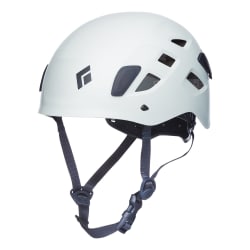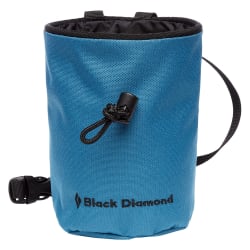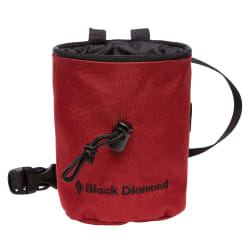Climbing for Beginners - What do I need to get started?
Ready to climb? Learn about essential gear like climbing shoes, harnesses, and belay devices to get started. The right climbing equipment and accessories will depend on individual preferences, the type of climb you plan to do, and the conditions in which you’ll be climbing. It’s important to invest in high-quality gear to ensure a safe and enjoyable climbing experience.
1. CLIMBING HARNESS
The heart and soul of every climber's safety toolkit is definitely the climbing harness. Comprising a waist belt and leg loops connected by a web of buckles and straps, this trusty companion keeps you securely attached to the rope system.
How to use: To slip into your harness like a pro, loosen those straps, slide into the leg loops, cinch it up to your waist, and fasten it with a satisfying click. The harness should have a snug fit above your hips without limiting your movement. It should not slide down when pulled over your hips, ensuring it stays securely in place.
SUGGESTED PRODUCT: Singing Rock Rob Harness OR Singing Rock Top Harness
2. Climbing Shoes
Choosing the right climbing shoes is essential for any climber, as they can greatly impact your performance and comfort on the rock or wall. For beginner climbers, a neutral shoe with a flatter shape and more comfortable fit may be a better choice. Ultimately, the best way to choose the right climbing shoes is to try on several different pairs and consider your personal preferences for fit, comfort. It’s important to remember that climbing shoes should fit snugly but not be painful, as this can lead to discomfort and even injury while climbing.
3. Helmets
When selecting a helmet, there are a few key factors to consider. Firstly, the weight of the helmet should be taken into account, as a heavy helmet can become uncomfortable during long climbs. The fit of the helmet is critical, as it needs to sit securely on the head without wobbling or shifting during a fall. When trying on helmets, ensure that there is a snug but comfortable fit, with no gaps or pressure points. The helmet should sit low on the forehead and cover the back of the head, while still allowing for full vision and hearing.
SUGGESTED PRODUCT: Black Diamond Half Dome Helmet
4. Belay devices
A belay device is a crucial piece of equipment used in climbing to control the rope and provide a safety backup for the climber. Choosing the best belay device for the job is important for the safety and efficiency of the climb. For beginners we would recommend tube-style devices, such as the ATC (Air Traffic Controller), which use friction to control the rope. They are simple to use, lightweight, and can be used for a variety of rope diameters.
SUGGESTED PRODUCT: Black Diamond ATC XP Belay Device
5. Climbing Ropes
Climbing ropes are an integral part of the safety system in climbing and play a vital role in preventing accidents and ensuring a safe and enjoyable climbing experience. When selecting a rope, it’s crucial to consider factors like length, diameter, and features like dry treatment for wet weather conditions. The length of the rope will depend on the type of climb and the route’s length, with longer ropes generally being more versatile. The diameter of the rope is also important, as thicker ropes provide more durability and are better suited for high-traffic climbing areas. However, thinner ropes are lighter and easier to handle, making them a great option for longer climbs.
An additional item to opt for is a rope bag which is designed to be lightweight and comfortable to hold your personal belongings, gear and climbing rope. Most climbing bags offer detachable sheets which allows you to keep your gear and rope clean, extending the lifespan of your climbing equipment.
SUGGESTED PRODUCT (Rope): Beal Antidote 10.2mm x 60m OR Beal Virus Dynamic Rope 10mm x 60m
SUGGESTED PRODUCT (Bag): Singing Rock Rope Bag
6. Quickdraws & Carabiners
Quickdraws consist of two carabiners and a sewn sling, and are used to connect the climber’s rope to the bolts or anchors in the rock face. When selecting quickdraws and carabiners, it’s important to consider factors like weight, length, gate type, and strength rating. Lightweight quickdraws are ideal for long climbs, while longer quickdraws allow for smoother rope movement and less drag. Extra locking carabiners is a must as they provide versatility and can be handy for various tasks like building anchors or extending gear placements.
SUGGESTED PRODUCT (Quickdraws): Black Diamond Hotwire Quickdraw Octane 12CM OR Singing Rock Vision Dyneema Quickdraw
SUGGESTED PRODUCT (Carabiners): Black Diamond Rocklock Carabiner OR Singing Rock Colt Screwgate Carabiner
7. Chalk
Climbers use chalk, the same type as athletes, gymnasts and weightlifters, to dry sweat and other moisture on their hands, increasing friction and improving grip while climbing. Chalk comes in various forms ranging from liquid to a fine powdered chalk that is used and stored in a chalk bag.
SUGGESTED PRODUCT: Singing Rock Magnum Liquid Chalk 150ml OR Black Diamond Loose Chalk 100g & Black Diamond Mojo Chalk Bag
8. Clothing
When gearing up for climbing, we suggest choosing shorts, loose pants, or leggings to ensure unrestricted movement while climbing. Opt for light, breathable, and flexible fabrics to enhance comfort. Remember to avoid clothing with loose or dangling straps that might snag on equipment or ropes. Dressing in layers is key for outdoor climbing, enabling you to adjust your clothing as the temperature fluctuates throughout the day.
9. Other accessories and gear to consider
In addition to the essential gear mentioned, there are some extra accessories and gear that climbers may want to consider. A Personal Anchor Chain (PAC) or Daisy Chain can be useful for creating an adjustable anchor point while climbing. Carrying a selection of cams and nuts can be essential for protecting and securing cracks and crevices on the any climbing surface. Slings are versatile pieces of gear that can be used for extending anchors, creating equalised systems, or as emergency backups.
10. General Safety & Climbing Etiquette tips
Safety is the top priority in climbing, and as a beginner, you'll find valuable insights from experienced climbers at crags and climbs. Climbing is a complex sport. With the rise of climbing gyms, trying it out has become easier. However, for safety, formal classes are recommended to learn essential skills like belaying and tying knots. Enroll in an introductory course at your local climbing gym or seek classes from local guides for outdoor climbing or mountain adventures.
Learning the ropes of climbing takes time, but being open to advice can accelerate your progress. Remember to follow the “Leave No Trace” principles when climbing in delicate wilderness areas. Show respect by leaving the area as you found it, adhering to closures, packing out trash, erasing tick marks, and staying on designated trails. When climbing on cliffs or peaks, be mindful of others below, avoiding dropping rocks or gear. Take extra care in loose terrain to avoid dislodging anything. If you encounter a slower party on a multi-pitch climb, pass with care and consideration, having a conversation with them and only passing when it's safe to do so.
With the right training, gear, accessories, safety tips and climbing etiquette you're now equipped to embark on an epic climbing journey. Gear up, aim high, and savour every moment of your thrilling vertical adventure!

SUGGESTED CLIMBING SPOTS FOR BEGINNERS:
Block 11 – Situated in both Paarden Eiland and Diepriver, this is the perfect indoor climbing gym for beginners. Indoor climbing offers its own rewards, yet numerous climbers utilize gyms as a training ground to achieve their outdoor climbing aspirations.
City Rock – Offering world class facilities in Cape Town, Johannesburg and Pretoria, City Rock offers a space for like-minded people to share the love of climbing.














